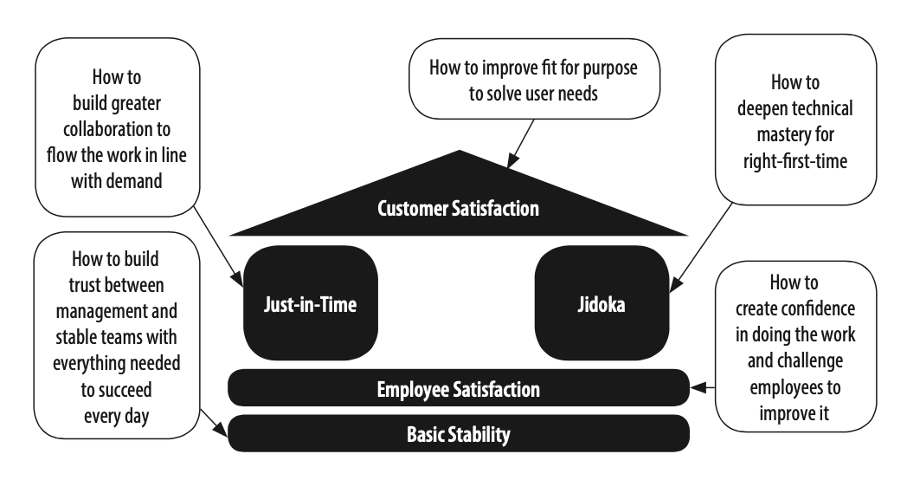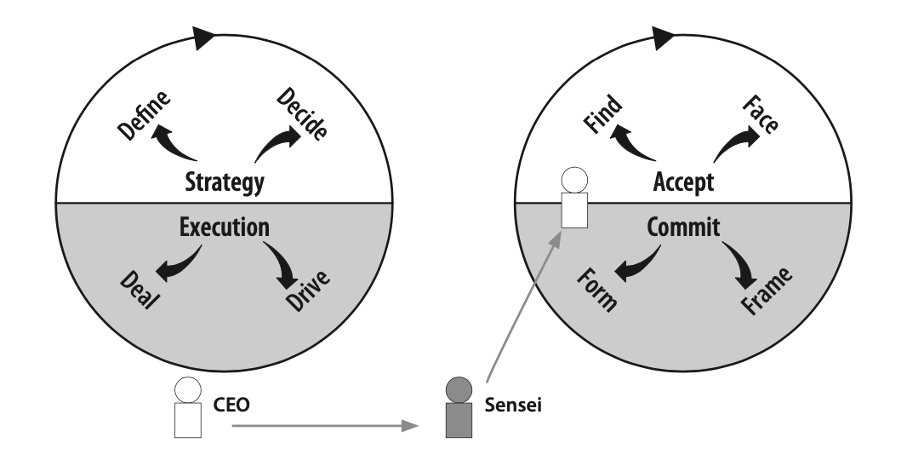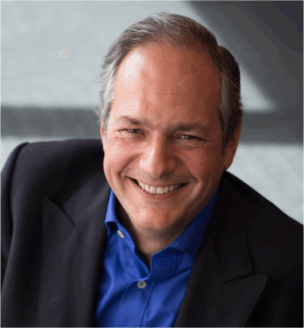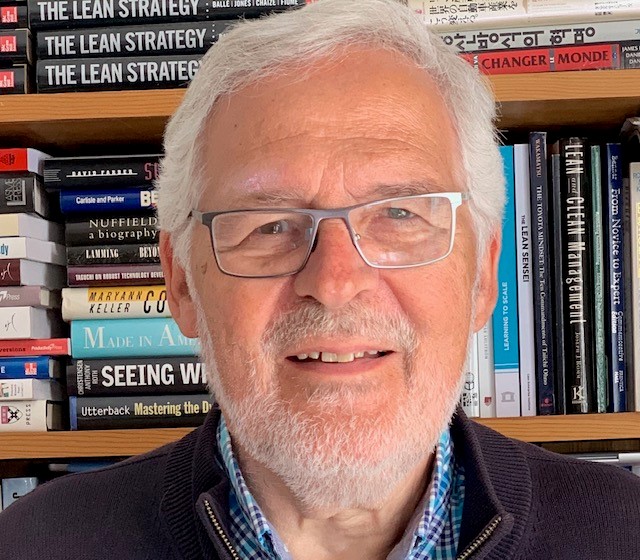What is the Lean in Lean?
Jul 18, 2022

FEATURE – The only way for lean to succeed is to change a leader’s behavior so the rest of the organization will change too and people get the support they need to become problem solvers.
Words: Michael Ballé and Daniel Jones
Thirty years after we first used the word “lean” to describe the unique way of managing enterprise performance we discovered at Toyota, the term has become part of the business language, mostly in the reductive sense of “lean production”. What’s in a word? Over the years there have been endless debates on whether “lean” truly describes the Toyota Production System (TPS). Ironically, within Toyota, TPS veterans also argue that the term production system is misleading. It implies TPS is the sum of Toyota’s production techniques, which is absurd since these have kept evolving while the overall framework – the system – has changed very little, indeed driving the constant evolution of practices. Nampachi Hayashi, who was mentored by Taiichi Ohno (the “founder” of lean), argues it should have been called the Toyota Process Development System – a method for human capital development that strives to make people think about avoidable costs. Other Toyota veterans have said it should really be thought of as the Thinking People System.
Words evoke, they don’t describe – there is no inherent “cattiness” in the word “cat”. Lean was chosen to evoke speed, agility, sleekness, and yes… no fat. What struck us when we first compared Toyota to other automakers in the late 1980s was how much leaner their processes were, and how this translated into superior performance. We knew that we were seeing it from the outside – the what not the how – and embarked on a journey of discovery of how they did this. We also knew we needed to beware the “halo effect”, business writers’ tendency to attribute good practices to successful companies. As we all know now, most excellent companies used as models by bestsellers such as In Search of Excellence or Good to Great were no longer excellent just a few years after the books came out, although they continued to operate in the same manner. Toyota, however, has continued to outperform its competitors, becoming the dominant player in the industry, and its different approach to management is strikingly visible in how it handles crises. In recent years, through lockdowns and chip shortages, Toyota has suffered far less than its competitors while applying more of its core TPS concepts such as just-in-time, jidoka and kaizen.
Many companies have tried to emulate Toyota by applying their practices and achieving, on the whole, disappointing results. A few business leaders, however, have delved much deeper into what makes Toyota different (as opposed to cherry pick interesting “lean” ideas) and have indeed found that the promise of lean is real. Some, such as Art Byrne of Wiremold fame, or more recently Nicolas Chartier, co-founder of Aramis Group, have written about their experience of learning and using Lean Thinking in books like The Lean Turnaround or Raise the Bar. What they describe is very different to what most executives and consultants understand as “lean”. They explore in depth how lean tools are used not to squeeze productivity out of a process but to develop human capital throughout the company. By making people think more deeply about what they do, they learn to make better day-to-day decisions and cooperate with each other, and this boosts performance at every level.
The radical pivot here is not using lean techniques to achieve an objective, such as the “lean six sigma” approach of systematically reducing variation to increase output, but to support people in thinking about the contextual problems they face and then trying out countermeasures to learn to overcome obstacles. Shifting frameworks from activity/objectives to problem/countermeasure looks simple enough but, as it turns out, it is difficult to achieve at scale – our organizations are designed to cascade activities and objectives from the top, not to encourage autonomous thinking at every level. The bureaucratic system will fight the lean system at every step.
How do you capture a paradigm shift? Readers will understand what they recognize according to their own mindsets, so how does one describe a worldview shift? Peter Drucker’s management-by-objectives was one such shift. Mid-century hierarchical organizations were largely about command-and-control: the boss says, the employee does. In truth, at the time, there was widespread understanding that the employee has to agree with the order to carry it out, and that cooperation amongst bosses was necessary to succeed overall, but such arguments were progressively abandoned as the financial framework came to be used as a definitive representation of business. Indeed, Drucker felt he was liberating managers from the dictatorship of executives by his management-by-objectives system. With this system, executive and manager both look at the numbers as they appear in the budget, decide on performance objectives and then the manager is free to find his or her own way to achieve this performance. This is the core truth behind the MBA ideology: do what you have to do in order to make the short-term financial numbers look good.
The Profit and Losses framework breaks down any business into clear categories: first, turnaround, your monthly sales. Then operational costs, how much it costs to run the business day after day, purchasing material, paying people’s wages, and overheads such as marketing and engineering. Then financial profits and losses from financing activities, largely to do with financing investments or refinancing debt. Finally, exceptional gains or losses where one hides everything that one does not want to explain. With this framework, managers can now explain how they choose certain activities to either increase revenues or reduce costs. The argument is that if everyone is doing better than the budget, the company should be going ahead overall.
With this framework in mind, managers propose plans to achieve objectives. This thinking has become so ubiquitous that no one ever questions its validity anymore. Specifically, no one questions first, how costs are accounted for and, second, how activities relate to company performance (or not). An entire consulting industry has arisen to replace old fashioned command-and-control supervision with project management: let’s get this done in order to achieve that objective. Never mind that the enterprise is a system and that any pressure on one aspect is likely to shift the burden elsewhere and not achieve much overall.
The TPS presents a completely different view of the business. Its first priority is customer satisfaction. With customer satisfaction first, the reasoning goes, the company will prosper as long as it keeps its overall costs down. To do so, it needs people to think constantly about achieving customer satisfaction while shunning avoidable costs. Avoidable costs, often called “waste”, are hard to spot, and so people need to be trained daily to see, understand and eliminate them in order to deliver more value. This first requires managing workloads. If a team is overworked, it can’t think clearly and if it is underworked, it won’t. Just-in-time is really a mechanism to visualize load vs. capacity and balance workload throughout the company in order to avoid mura (workload variation), which will create muri (overburden) and result in muda (waste).
Also, to satisfy every customer every day, each person must be in charge of their own quality. Quality is tricky because there is one way to do things right, a million ways to do them wrong and circumstances change all the time. From the very early days of Toyota tradition, Sakichi Toyoda understood that problems have to appear where and when they arise, and that people need to address each instance immediately to understand how things go wrong and learn to do them better. After the fact, analysis is generally no good because context will have changed, and the real problem will be that much harder to figure out. This insight led to the development of the “jidoka” concept of intelligent automation: each machine should be equipped with the means of telling whether it is doing good work or not, and people should be able and willing to react right away to every abnormality. This idea was later generalized to every process and hit upon a deep, deep insight about adult learning: adults learn from their mistakes when they realize and accept that they’ve made one, so they need ways to test their own quality. Having an inspector do it and tell them off leads to greater compliance but not learning – nor greater competence.
Furthermore, to focus daily on satisfying customers through always better quality, people need to be engaged with their work and involved with their teams and their groups. They need to want to belong to a company that does the right thing and where officers are competent. Team kaizen activities and supporting individual suggestions are the key to creating higher engagement when executives take an active interest in people’s ideas and initiatives. Kaizen efforts and kaizen reviews by senior managers, exchanging views, explaining global challenges, and listening to local problems creates a vastly different atmosphere than the usual cold and listless bureaucratic environment of strategic decision-making at headquarters and disciplined execution in the field. People engagement in improving their own quality, delivery and costs and executive engagement in people development are the cornerstone of all other TPS principles. As we’ve heard countless times, in order to make parts, first you learn to make people.
Finally, the company will perform if its fundamental systems do – this simple manpower, machine, materials, method analysis (we’d probably add data to this now) is the key to the basic stability of processes and to creating an environment where people can work safely, productively and, dare we say it, quite happily. This approach differs radically from the project management view of getting things done. It understands the enterprise is a dynamic system and looks to improving conditions in order to improve performance. The inventors of Lean Thinking found it obvious that optimizing local performance would rarely lead to overall results and were always puzzled at all the Western attempts to do exactly that.
These two frameworks, the financial and the TPS, don’t merge happily. The goal of the financial framework is to enable every manager to set (and accept) objectives and so do what they must to achieve them. The TPS framework is about recognizing operational problems through better visualization of value and seeking countermeasures by trial and error. The thinking is radically different.

As we argued in The Lean Strategy, the reasoning process underlying these frameworks differs radically. The financial approach starts with an abstract description of the situation (where is the turnover and what is the cost) in order to define the situation in terms of objectives, then decide on which option to take or activity to pursue, drive the decision through the ranks and finally deal with all the unanticipated consequences of decisions made on a skewered worldview. By contrast, Lean Thinking starts with the reality of operations in finding problems, through visualizing flow and quality, and then facing the aspects of the problems we currently don’t know how to solve, framing this knowledge gap as a challenge to take up or a problem to solve, in order to form solutions from everyone’s experiments in countermeasures and sharing the learning. The TPS is not a set of reusable known practices to be applied in cookie-cutter fashion. It’s a system of reusable learning that can steer learning in any condition.

As Chartier tells it, his a-ha moment with Lean Thinking, after having tried the usual consulting workshop route to apply lean practices, came when he realized that, in his terms, “processes were always the problem and people always the solution.” As a business leader, he needs repeatable processes for his company to operate routinely. This involves both division of labor (to benefit from narrow, pointed expertise) and standardization of work (for economies of scale). But processes are always too rigid and fallible, particularly as circumstances change rapidly. Standardized processes are structurally a source of problems for both customers (who want different things) and people (who deal with context issues). By orienting people towards finding success in solving problems and supporting them in doing so, the company learns to outperform its competitors on the go. Indeed, processes are what people do.
In studying Toyota, we realized early on that we were looking at a different way of thinking. Indeed, when one of us co-authored the first book about lean he talked about lean thinking, not lean production or lean enterprise. Capturing this different thinking, however, has been an interesting challenge, as described by the number of great contributions from other researchers looking at Toyota up close, such as our colleague and mentor Jeff Liker, who described Toyota’s “paradoxes”, or what Hirotaka Takeuchi, of The Knowledge-Creating Company, called the radical contradictions of Toyota. We believe that such paradoxes or contradictions reflect our own difficulties to fit the new paradigm of Lean Thinking into the old paradigm of managing-by-objectives. One of the difficulties is that to truly grasp Lean Thinking we first need to understand the financial framework and recognize the gap. For instance, do you have a budget for kaizen? An investment plan for jidoka?
Run of the mill lean programs don’t deliver results beyond low hanging fruit that will never change the bottom line because there is no lean about their lean. From within the old paradigm of managing-by-numbers, leaders interpret tools that were made to make people think about their own work in the taylorist fashion of having experts optimize processes and force people to comply. A pig with lipstick is still a pig, as we can see with the current craze of interpreting hoshin kanri as objectives deployment through the business. Furthermore, from fascinating firsthand accounts by Toyota veterans such as Nate Furuta’s Welcome Problems, Find Success, we now know that Toyota suffers from the same mindset difficulties. Furuta gives a detailed description of his turnaround of the Europe division where hoshin kanri was used as a process without facing any of the true challenges to make the division profitable. Furuta led a return to the true meaning of hoshin kanri: visualizing challenging target conditions, facing difficult problems, breaking them down into manageable chunks the people themselves could attack, and creating the catchball process of up-and-down communication (the hallmark of true lean hoshin kanri) – eventually seeing radical improvement on all dimensions, both financially and in internal cooperation across European operations. Your perspective and attitude matter.
As we look back to 30 years of attempts to learn from Toyota, we can see that the distinguishing factor is the CEO’s attitude. Do they treat lean as a project to reduce budget costs line by line? We now know this will fail – every single time. Or do they commit to learn lean for themselves, with a sensei, and then teach what they learn to their direct reports, leading by example on the shop floor as Art Byrne and Nicolas Chartier have done? As Paul Adler clearly saw when studying Toyota’s NUMMI experiment in its early attempt to work with General Motors, bureaucracy is necessary to create large organizations, but it can be either a red-tape bureaucracy (that we all know and hate) or an enabling bureaucracy where all efforts and insights contribute to the later good. The difference, we now believe, hinges on the leader’s attitude to learn from the workplace and to shift the language of the company from one of compliance (“do this to achieve this objective”) to one of people development (“look more deeply into the problem, try new countermeasures, and think and share about the results”) so that we all learn, together, as we create value.
If there is one lesson here, it’s that thinking drives behavior and that the behavior of those at the top models the rest of the organization. Change the thinking at the top, change the behavior, change the people, change the outcomes. Improvement activities are not about improving processes, but about deepening each person’s understanding of problems and leveraging their capacity for insight and initiatives by trying new countermeasures. Unless the thinking changes, particularly at the top, then all the lean tools in the toolbox and all the lean programs in the world will not deliver lean’s potential. No one can do this for you. It’s up to you!
THE AUTHORS

Michael Ballé is a lean author, executive coach and co-founder of Institut Lean France.

Daniel T. Jones is co-author of seminal lean books including The Machine that Change the World, Lean Thinking, Lean Solutions and The Lean Strategy.
Original Article: https://planet-lean.com/lean-leadership-change/
Stay In Touch.
Subscribe to our newsletter and exclusive Leadership content.
We respect your privacy and won’t spam your inbox
